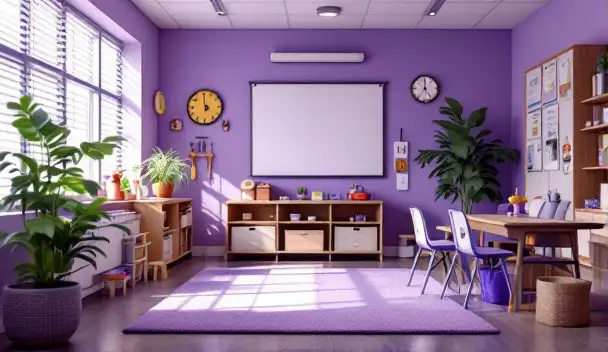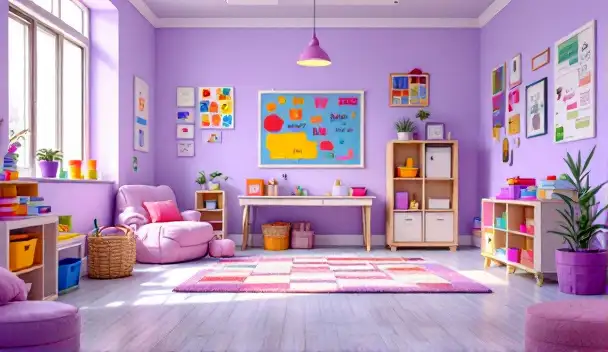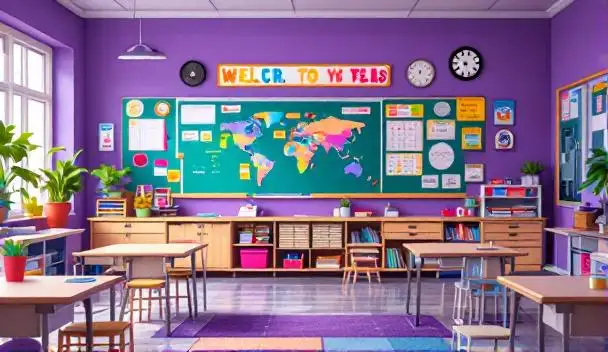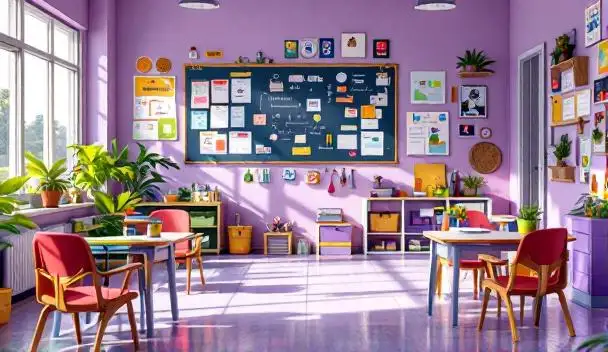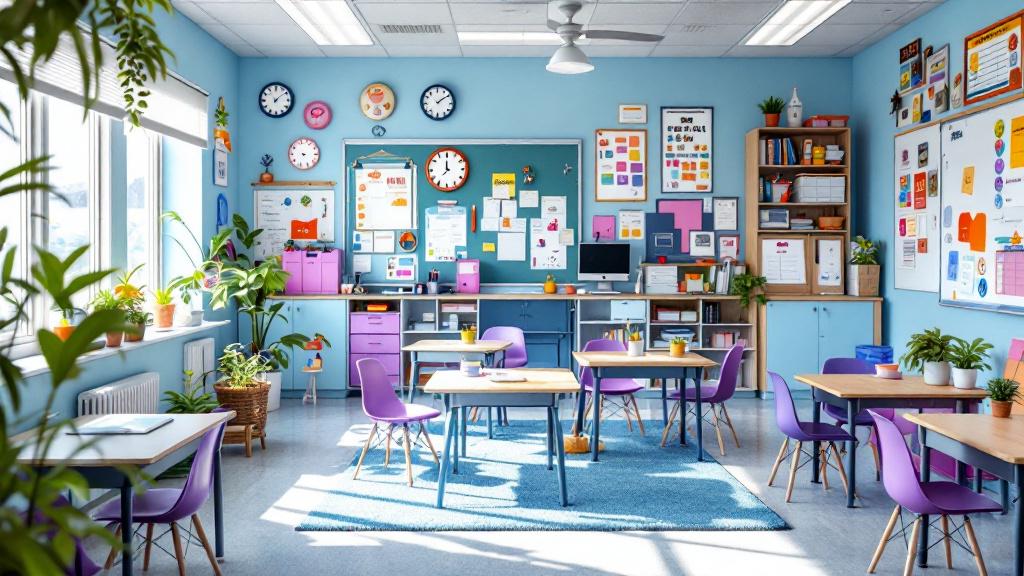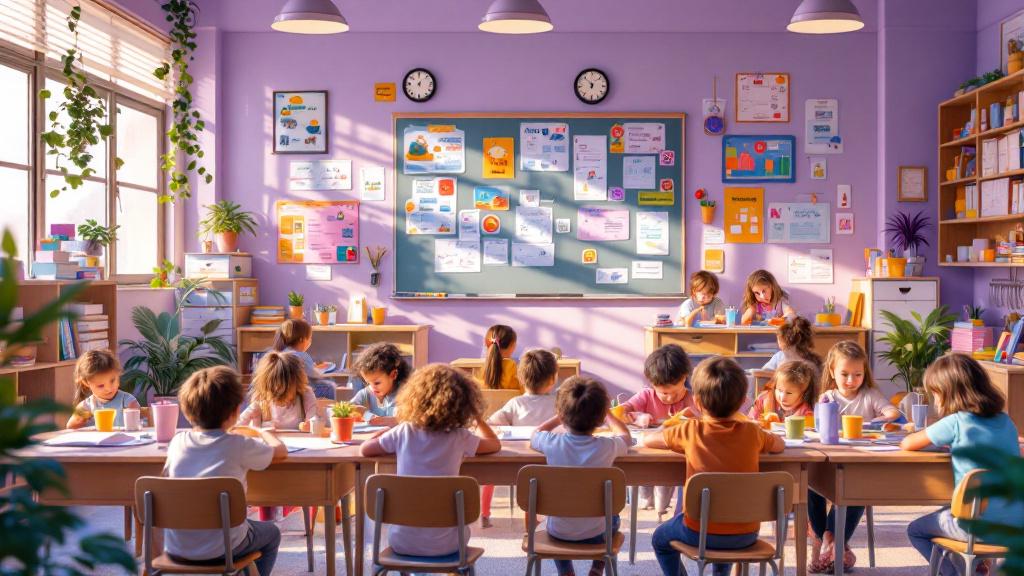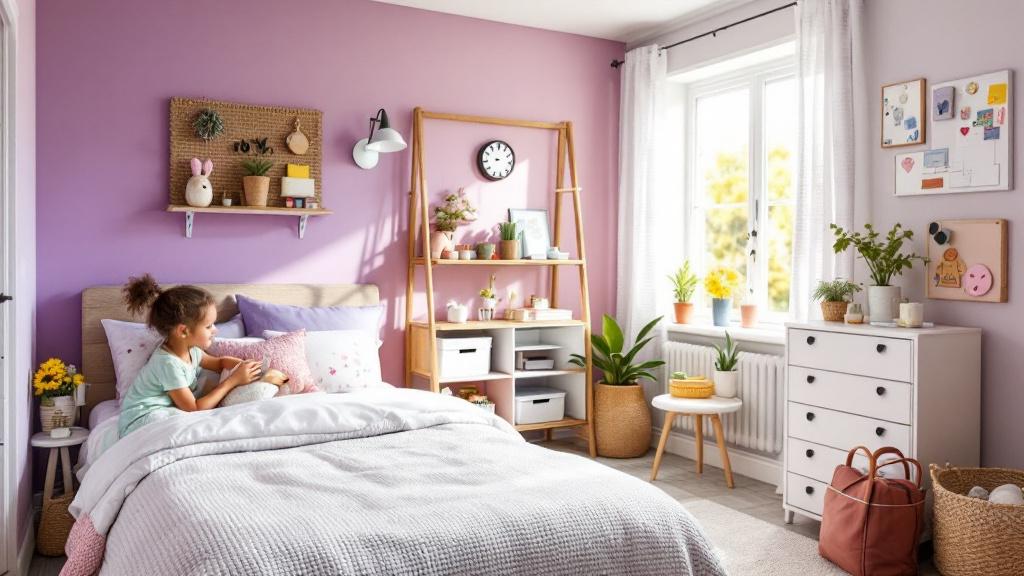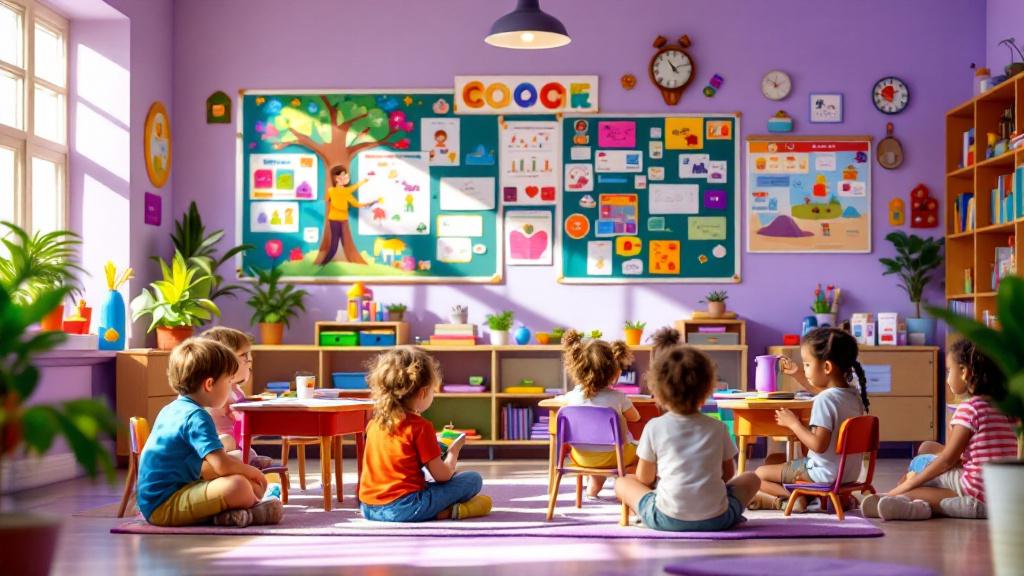Embracing the Power of Play in ABA Therapy
Incorporating play into home-based Applied Behavior Analysis (ABA) therapy offers a transformative approach to learning for toddlers with autism. Play-based learning techniques not only engage children in enjoyable activities but also foster essential skills for their development. This comprehensive guide will navigate through various strategies, principles, and benefits of integrating play into ABA therapy at home, offering practical insights to caregivers and educators.
Why Play-Based Learning is Crucial in Home-Based ABA Therapy

Importance of Play-Based Learning
Promoting play-based learning at home is vital for children's development as it helps them understand the world around them through engaging activities. Environments designed for play are crucial for healthy development, as they allow children to explore and interact with their surroundings.
The Role of Play in Child Development
According to the American Academy of Pediatrics, play fosters essential skills such as:
- Problem-Solving: Children learn to navigate challenges, helping them develop critical thinking.
- Language Development: Engaging in play enhances their communication skills, enabling better expression of needs and ideas.
- Social Skills: Interacting with peers during play enhances their ability to cooperate and share, essential for future classroom settings.
Activities like storytelling, building with blocks, and sensory play not only enhance learning but can also be easily implemented using everyday household items.
Why Focus on Social Skills?
Incorporating play into daily routines supports children's creativity and overall growth. Play is a natural part of childhood, providing a relaxed atmosphere that encourages children to vocalize and engage socially. This non-structured environment is key for promoting emotional understanding and empathy as children act out roles and scenarios.
Structured play, which includes specific goals tailored to each child's needs, helps children develop different skills organically while enjoying the process.
Engaging in Effective Learning at Home
Ultimately, integrating play into home-based ABA therapy not only enhances learning but strengthens the parent-child bond. Caregivers can celebrate successes in play, reinforcing a positive learning environment. This combination of fun and education lays a strong foundation for academic success, ensuring that children are well-prepared for the school environment.
Engaging Strategies for Play-Based Learning at Home

What are some fun play-based learning strategies for early childhood education?
Incorporating play-based learning into early education can transform routine interactions into vital learning experiences. Here are some engaging strategies:
Group Games: Activities such as tag, group puzzles, or relay races can foster teamwork and enhance social skills. They teach children how to collaborate and communicate effectively.
Music and Movement: Using music for dancing or rhythmic games helps in developing motor skills. This approach not only keeps children engaged but also supports their physical development.
Nature Exploration: Bringing elements of nature into play, like allowing children to explore plants or create nature art projects, promotes curiosity about their environment and a connection to the world around them.
Cultural Games and Stories: Celebrate diversity by introducing games and stories from different cultures. This helps children understand and appreciate various backgrounds, promoting inclusivity.
Imaginative Play: Engaging children in role-playing scenarios, such as dress-up as doctors or teachers, stimulates creativity while helping them learn empathy and perspective-taking.
Humor in Learning: Infusing humor into daily routines can lighten the atmosphere, making learning fun and less stressful for children.
Crafting Fun Activities for Skill Development
Developing a variety of fun activities is crucial for maintaining children's interest while promoting essential skills. Some ideas include:
- Building Blocks: Encourage creativity, spatial awareness, and fine motor skills through building games.
- Art Projects: Use varied materials for art sessions to enhance creativity while teaching techniques like mixing colors.
- Cooking Together: Simple cooking projects can lead to fun math lessons (measuring ingredients) and nutritional education.
Nurturing Creative Play for Cognitive Growth
Creative play is instrumental for cognitive development as it encourages children to navigate problems and engage with others. Consider these strategies to promote creativity:
- Storytelling Sessions: Encourage children to create their own stories. This fosters language skills and promotes imaginative thinking.
- Puppet Shows: Using puppets for storytelling develops communication skills and emotional intelligence.
- Exploratory Play: Give kids access to various crafts or science kits that allow them to experiment and learn through hands-on experiences, leading to critical thinking.
Overall, integrating these varied, fun play-based strategies into daily routines not only supports learning but also enriches the overall developmental journey for young children.
Implementing Effective Play-Based Strategies in Home-Based ABA Therapy

How can caregivers encourage play-based learning during home-based ABA therapy for children with autism?
Caregivers play a vital role in fostering play-based learning within home-based ABA therapy for children with autism. Recognizing the three primary types of play—solitary, parallel, and cooperative—can aid in assessing and enhancing a child's social, cognitive, and motor skills. For instance, solitary play allows children to engage in activities independently, while parallel play invites them to play side by side with others, and cooperative play encourages group interaction.
To begin, caregivers should observe how their child currently plays to identify strengths and areas needing improvement. This assessment is crucial for developing targeted strategies using ABA techniques like Discrete Trial Training and Pivotal Response Training. These methods are designed to enhance specific play skills through structured practice. It's beneficial to start by building comfort with adult presence, gradually introducing peers into play scenarios to encourage interactive experiences.
What techniques can be integrated into ABA to enrich playtime?
Incorporating structured, play-based techniques into ABA therapy can significantly enrich the learning experience. Caregivers can utilize several strategies:
- Task Analysis: Break down complex play skills into manageable steps, making them easier for the child to grasp.
- Incidental Teaching: Use naturally occurring opportunities to teach during play, reinforcing learning in a meaningful context.
- Play Scripts: Create structured play scenarios that guide interactions, promoting language, imagination, and social engagement.
Utilizing both closed-ended (e.g., fitting shapes into a matching box) and open-ended play (e.g., building with blocks) can also provide varied stimuli that cater to different learning styles.
How can caregivers promote a playful environment conducive to learning?
Promoting a playful environment is essential for effective learning through home-based ABA therapy. Caregivers can achieve this by:
- Providing Developmentally Appropriate Activities: Choose toys and games that align with the child’s interests and developmental level, ensuring engagement during sessions.
- Celebrating Successes: Use positive reinforcement to reward desired behaviors during play, helping children associate playtime with effective social and cognitive skills.
- Expanding Play Scenarios: Encourage imaginative play by suggesting themes and roles for playtime, which can enhance creativity and communication abilities.
By integrating these strategies, caregivers can ensure that play remains a natural and effective way for children to learn vital skills, ultimately leading to success in social situations and academic settings.
Role of Play in Skill Development for Children with Autism
What is the role of play-based learning in enhancing skill development in children with autism during ABA therapy?
Play-based learning plays a vital role in enhancing skill development in children with autism during ABA therapy by transforming traditional therapeutic activities into enjoyable and engaging experiences. Through various types of play—functional, symbolic, and social—children practice critical skills such as communication, socialization, and emotional regulation.
Structured play activities are designed by therapists with clear objectives, promoting language development through interaction and reducing anxiety associated with therapy. This approach fosters cooperation and turn-taking, essential for developing social skills while providing natural contexts for generalizing learned skills to everyday situations.
How does play impact therapy effectiveness?
Research supports the effectiveness of play-based interventions, highlighting their ability to enhance social skills and communication in autistic children. Incorporating play into ABA therapy leads to:
- Enhanced Engagement: Children are more likely to participate actively in sessions that utilize play, which makes learning enjoyable.
- Reduced Anxiety: A comfortable, familiar environment during play minimizes stress, allowing for a greater focus on skill acquisition.
- Critical Skill Development: Skills such as problem-solving, decision-making, and emotional understanding are naturally integrated into play scenarios, encouraging children to navigate real-world situations.
What types of play are beneficial in ABA therapy?
Effective play types in ABA therapy include:
| Type of Play | Description | Skills Developed |
|---|---|---|
| Functional Play | Engaging with toys for their intended purpose. | Motor skills, coordination, and basic communication. |
| Symbolic Play | Using objects to represent something else (e.g., using a block as a car). | Imaginative skills, problem-solving, and language development. |
| Social Play | Interacting with peers, often in games or role play. | Cooperation, empathy, and social engagement. |
Incorporating these play types helps children practice skills in authentic settings, facilitating smoother transitions into more structured learning environments. Overall, play is not just a way to have fun; it serves as a powerful tool in home-based ABA therapy, enhancing development and readiness for school.
Understanding ABA Therapy Principles for Home Application
What are the core principles of ABA therapy?
ABA therapy is based on a set of foundational principles that guide the therapeutic process to maximize learning and skill acquisition for children, especially those with autism spectrum disorder (ASD).
The key principles include:
- Behavior Analysis: Observing and measuring behaviors gives therapists clear insights into the child's learning patterns and challenges. This analysis is essential for crafting tailored interventions.
- Reinforcement: Positive and negative reinforcement techniques are employed to encourage desired behaviors. Positive reinforcement, such as praise or rewards, increases the likelihood of repeating those behaviors, creating a positive learning environment.
- Prompting: Providing cues helps the child learn new behaviors in a supportive manner. Gradual fading of prompts encourages independence and skill generalization.
- Generalization: Teaching children to apply their learned behaviors across different settings strengthens their overall learning and adaptability.
- Data Collection: Continuous data tracking of a child’s progress informs both parents and therapists of effectiveness and allows for necessary adjustments in interventions.
How can I implement reinforcement techniques at home?
Incorporating reinforcement strategies at home helps in reinforcing positive behaviors effectively. Here are some practical tips:
- Identify Rewards: Determine what motivates your child—stickers, extra playtime, or a favorite snack.
- Be Consistent: Use consistent reinforcement to ensure that your child understands which behaviors are desirable.
- Celebrate Successes: Acknowledge even small achievements to build confidence and encourage further progress.
Utilizing these principles consistently will enhance your child's learning journey in a comfortable and familiar home setting.
Creating a Structured Play Environment at Home
Structured Play Activities
Structured play is an effective way to promote essential skills in children, especially those with autism spectrum disorder (ASD). By choosing specific activities, parents can create goal-oriented sessions that target social skills, communication, and problem-solving. Useful activities include:
- Turn-taking games: Board games or card games teach children how to take turns, a critical social skill.
- Role-playing scenarios: Using puppets or dolls to act out situations helps develop empathy and communication.
- Creative art projects: Engaging in craft activities fosters imaginative play while allowing for language development.
Developing a Play-Friendly Space
Creating a designated play area at home can significantly enhance a child's learning experience. Here are some tips for setting up a play-friendly space:
- Safe and accessible: Ensure that the area is free from hazards and that all toys are within the child’s reach.
- Organized and inviting: Keep materials neatly arranged and create an inviting environment with comfortable seating and bright colors.
- Flexible setup: Adapt the space to different activities; use tables for crafts and open floor areas for movement and games.
Guidelines for Parents
To maximize the benefits of structured play, parents can follow these guidelines:
- Clear objectives: Define specific goals for each play session to ensure skills are targeted effectively.
- Incorporate favorites: Use the child’s interests to keep activities engaging, which can enhance focus and enjoyment.
- Celebrate achievements: Praise the child for their efforts and successes during playtime to boost their motivation and reinforce positive behaviors.
By using these strategies, parents can create an enriching play environment that supports their child's development in a fun and effective way.
Utilizing Individualized Strategies in Home-Based ABA Therapy
Tailored Interventions
In home-based ABA therapy, interventions are uniquely designed to match each child's individual strengths and challenges. This personalization ensures that specific needs are addressed effectively, promoting engagement and motivation during sessions. By utilizing a child's interests, therapists can implement strategies that align with what excites them, further enhancing the learning experience through play-based methods.
Child-Specific Goals
Each session in home-based ABA is structured around clear, child-specific goals, which detail what the therapy aims to accomplish. These goals often include improving social skills, communication abilities, and self-regulation techniques. Through ongoing assessments, therapists can track progress and adjust objectives, ensuring that each child is continually challenged yet supported in their developmental journey.
Therapist Collaboration
Effective home-based ABA therapy relies on open communication and collaboration between therapists and parents. By actively involving families, therapists empower caregivers to reinforce learning strategies outside of sessions. This collaboration fosters an environment where skills are consistently practiced, making it easier for children to generalize what they learn into everyday contexts. Parents participate in goal setting, follow-through on strategies, and utilize data tracking methods to observe improvements, all of which enhance the overall effectiveness of therapy.
Incorporating Social-Skills Building Activities Through Play
How can social skill development be fostered through play?
Social skills are essential for toddlers with autism spectrum disorder (ASD) as they prepare for successful interactions in school. Home-based ABA therapy utilizes play to enhance these skills in a fun and engaging manner.
What are effective play-based strategies for enhancing learning?
- Structured Play Activities: Engage children in planned games that support turn-taking and following instructions, aligning with their developmental goals.
- Incidental Teaching: Use naturally occurring situations during play to introduce social language and communication skills spontaneously.
- Modeling: Demonstrating appropriate social behaviors, such as sharing or cooperation during playtime, helps children learn through observation.
- Pivotal Response Training: Encourage children to initiate play and respond positively to their peers, which strengthens their social engagement.
How can peer interaction improve social understanding?
Playing together allows children to develop empathy and perspective-taking. For example, pretending to be different characters in imaginative play helps them understand various viewpoints and emotions. This engagement not only supports social skill development but also builds important cognitive abilities by encouraging problem-solving and critical thinking, essential for their academic success.
Leveraging Parental Involvement for ongoing Skill Reinforcement
What Are the Roles and Responsibilities of Parents in ABA Therapy?
Parental involvement is essential in home-based ABA therapy. Parents play a critical role in reinforcing newly learned skills during everyday situations. By participating actively in their child's therapy, they help create an environment that encourages practice and consistency.
Regular communication with the ABA therapist is vital for understanding strategies tailored to their child's needs. Parents learn how to utilize techniques like positive reinforcement at home, making behavioral learning a part of daily routines.
How Do Parents Foster Continuous Learning?
To support their child’s continuous learning, parents can implement play-based strategies outside therapy sessions. Engaging in structured play using toys and activities aligned with the child’s interests enhances the learning experience. This playful approach minimizes anxiety, making the child more receptive to learning.
Additionally, parents can encourage their children's curiosity and excitement about learning by celebrating their successes, no matter how small. These moments of praise can be instrumental in reinforcing positive behaviors and skills.
Why Is Consistency Critical in Therapy?
Consistency is a cornerstone of effective ABA therapy. Establishing clear routines helps children understand expectations and promotes their ability to generalize learned behaviors across different settings.
By creating a structured environment at home, parents can aid their children in developing routines and self-regulation skills necessary for school readiness. Over time, consistent reinforcement at home can lead to more significant improvements in the child's abilities, making it easier for them to navigate both social and academic challenges.
Practical Tips for Overcoming ABA Therapy Challenges at Home
How can I ensure consistency in ABA therapy?
Consistency is crucial for effective ABA therapy. One approach is to establish a structured routine. Having clear therapy times and settings can help your child anticipate and prepare for learning. It’s beneficial to involve all family members, ensuring everyone applies the same strategies to reinforce the child’s learning.
Additionally, using visual schedules can provide a consistent framework for your child. This reduces anxiety and promotes a smoother transition between activities, enhancing focus.
What can I do if my child resists therapy?
Resistance is common and can be managed by making therapy sessions more engaging. Incorporate your child's interests into activities, making learning feel like play. Begin with shorter sessions and gradually increase duration as they become more comfortable. Positive reinforcement for participation, such as praise or rewards, can also encourage cooperation.
How should I handle challenging behaviors?
Managing challenging behaviors begins with understanding triggers. Keep a behavior log to identify patterns—this helps in developing strategies to address specific issues. Use techniques like operant extinction to reduce undesired behaviors by not giving them attention.
It's crucial to celebrate small successes. Praising your child for good behavior reinforces positive actions, making them more likely to reoccur. Involving your child in setting goals can also empower them and create a sense of ownership in their learning journey.
Overview of Challenges and Solutions
| Challenge | Strategy | Benefits |
|---|---|---|
| Consistency Issues | Establish structured routines; use visual schedules | Predictability, focus, reduced anxiety |
| Resistance from Children | Incorporate interests into play; use positive reinforcement | Increased engagement, cooperation |
| Behavior Management | Identify triggers; apply operant extinction; celebrate successes | Improved behavior, empowerment |
Implementing these strategies can help create a smoother and more effective home-based ABA therapy experience.
Integrating Positive Reinforcement into Daily Routines
What are Reward Systems?
Reward systems form the backbone of effective home-based ABA therapy. These systems involve providing a reinforcement immediately after the child engages in a desired behavior. This could range from simple verbal praise to tangible rewards, such as stickers or extra playtime. The idea is to create a positive association with good behavior.
How to Reinforce Desired Behaviors
Reinforcing desired behaviors helps children learn to self-regulate and understand what actions lead to positive outcomes. For example, when a child shares toys or takes turns during structured play, they could receive specific praise like, "Great job waiting for your turn!" This direct feedback encourages them to repeat the behavior in the future.
How to Apply Everyday Positive Reinforcement
Integrating reinforcement into daily routines can augment the learning process significantly. Parents can structure routines where behaviors like dressing themselves or communicating needs are rewarded. Utilizing visual schedules can assist in making these routines predictable and enhancing a child's sense of accomplishment as they complete tasks.
Techniques for Everyday Application
| Technique | Description | Examples of Application |
|---|---|---|
| Immediate Praise | Provides instant feedback for desired behavior. | "I’m proud of you for sharing your toys!" |
| Reward Charts | Visual tracking of behaviors that earn rewards. | Use a sticker chart for completing daily tasks. |
| Incorporating Fun | Making routine activities enjoyable increases engagement. | Play a game while practicing taking turns with friends. |
Integrating these practical strategies into everyday life not only helps in reinforcing skills but also strengthens the parent-child bond.
Exploring the Benefits of Fostering Imagination Through Play

Imaginative Skill Development
Imaginative play is a powerful tool in home-based ABA therapy. Engaging children in scenarios like pretending to be a teacher or a veterinarian helps enhance their imaginative skills. This form of play not only encourages creativity but also supports social interaction, as children learn to collaborate and communicate with their peers during these imaginative games.
Link to Cognitive Growth
The cognitive benefits of imaginative play are significant. As children expand play scenarios—by suggesting that toy animals are in a race—they practice problem-solving and critical thinking. These activities challenge them to think creatively and develop language skills.
Enhancing Creativity
Imaginative play fosters a child's ability to explore their thoughts and express themselves freely, promoting emotional understanding. This creativity is a vital aspect of their self-development, enabling them to navigate social complexities and enhance their coping skills in various situations.
| Benefit | Description | Example |
|---|---|---|
| Imaginative Skill Development | Enhances creativity and facilitates social interaction | Role-playing games with peers |
| Link to Cognitive Growth | Encourages problem-solving and critical thinking | Expanding scenarios in play, like a race |
| Enhancing Creativity | Supports emotional expression and self-understanding | Creating stories with toys |
Incorporating play in therapy illustrates the importance of imagination, making learning enjoyable while building essential skills for academic success.
Tailoring ABA Techniques for Effective Home-Based Sessions
Adapting ABA Methods for Home Environments
Home-based ABA therapy focuses on personalizing techniques to fit a child's unique needs and environment. By using structured play, therapists integrate goal-driven activities within familiar settings, enabling children to grasp essential skills while engaging with their surroundings. This approach incorporates positive reinforcement, such as praising achievements during play, encouraging desired behaviors, and making learning enjoyable.
Addressing Home-Specific Challenges
While implementing ABA at home offers several benefits, it can present challenges such as consistency and child resistance. To mitigate these issues, caregivers can set clear guidelines for sessions and, importantly, maintain engagement by using toys and games that reflect a child’s interests. Creating a structured therapy space also helps set the tone for focused learning, making transitions smoother and reducing anxiety about the process.
Therapist Support and Parental Involvement
Therapist support is vital in navigating potential difficulties in home-based ABA therapy. Qualified therapists can guide parents on reinforcement strategies and structured play activities that align with educational goals. By involving parents in therapy, they learn to reinforce communication and social skills during everyday interactions, thus enhancing consistency in their child's learning journey. This collaboration ensures children receive continuous, integrated support to maximize their growth.
The Long-Term Benefits of Play in Child Development
Lifelong Skills Gained from Play
Playtime is not just an opportunity for fun; it is essential for acquiring skills that last a lifetime. Through structured and unstructured play, children build the foundations of communication, problem-solving, and critical thinking. These skills enable them to navigate social situations effectively, express their needs, and manage their emotions.
Social and Cognitive Development
Engaging in play fosters substantial advancement in social skills. Children learn to cooperate, take turns, and empathize with others, which are crucial for building relationships. Simultaneously, cognitive development is enhanced as they engage in imaginative scenarios, boosting creativity and language skills. As children participate in activities that require planning and execution, they also develop decision-making abilities critical for school readiness.
Health and Wellness
Physical play is vital for overall well-being, promoting motor skills, coordination, and health. Regular activity helps children maintain a healthy weight and improves cardiovascular fitness. Additionally, play reduces anxiety and stress levels, contributing to better emotional regulation.
In summary, play provides a comprehensive approach to child development, equipping children with a range of skills that will benefit them throughout their lives.
Concluding the Play-Based Journey
Integrating play-based learning into home-based ABA therapy can significantly enrich the developmental experiences of toddlers with autism, paving the way for a more comprehensive and enjoyable approach to therapy. Through engaging, tailored activities, and the important role of caregivers, play can foster vital skills, enhance socialization, and lead to successful outcomes in therapy. By following the practical guidelines and strategies outlined in this guide, caregivers can create a nurturing environment that promotes learning and growth in every playful moment.
References
- Home-Based ABA Therapy to Prepare Your Toddlers For School
- Play-Based ABA Therapy at Home - ABATherapistJobs.com
- Encourage Play Skills - Achievements ABA Therapy
- Home-based ABA Therapy: A Comprehensive Guide
- ABA Therapy and Play: How Structured Play Supports Learning
- Unit 13: ABA and School Readiness: The Importance of Play Therapy
- 5 Steps to Teaching Play Skills - How to ABA





































